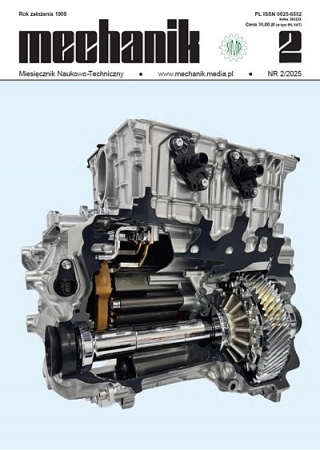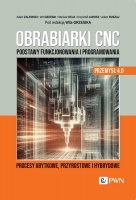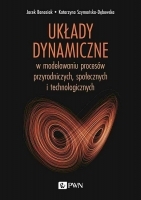Badanie funkcjonalności systemu wspomagania analizy błędów popełnianych przez użytkowników symulatorów maszyn *
Conducting a functionality test of a system serving to support analysis of errors committed by users of simulators
Mechanik nr 07/2018 - Różne
STRESZCZENIE: Przedstawiono procedurę badania funkcjonalności systemu wspomagania analizy błędów popełnianych podczas symulacji prowadzonej na symulatorze. Scharakteryzowano narzędzia, które zostaną wykorzystane w badaniach. Badania pozwolą określić funkcjonalność i przydatność opracowanego systemu w pracy instruktorów prowadzących szkolenia z użyciem symulatora.
SŁOWA KLUCZOWE: baza danych, rzeczywistość wirtualna VR, symulator, analiza błędów
ABSTRACT: Presented is a procedure of conducting a functionality test of a system serving to support analysis of errors occurred during simulations. It also characterizes tools used during the tests. These tests will allow to determine functionality and effectiveness of the system in work of instructors who conduct trainings on simulators.
KEYWORDS: database, VR technique, simulator, analysis of errors
BIBLIOGRAFIA / BIBLIOGRAPHY:
- Portouli V., Bekiaris E., Boets S., Henriksson P. „Comparative evaluation of training methods in improving drivers’ understanding about the functionalities and potential limitations of ADAS”. Proceedings of European Conference on Human Centred Design for Intelligent Transport Systems, France (2008): s. 217–226.
- Lozia Z. “Driving simulators as a tool for road traffic safety research”. Conference VIRTSAFE, CIOP-PIB (2005).
- ”Virtual reality goes to school”. New York Times, 2012. http://www.nytimes.com/2012/05/20/automobiles/virtual-reality-goes-to-school.html?_r=1.
- Juang J.R., Hung W.H., Kang S.Ch. “SimCrane 3D: A crane symulator with kinesthetic and stereoscopic vision”. Advanced Engineering Informatics. 27 (2013): s. 506–518.
- Kalwasiński D. ”Praktyczny test symulatora suwnicy w aspekcie symulacji wrażenia dotyku” (Practical test of overhead crane simulator in the context of the sense of touch simulation). Mechanik. 7 (2014): s. 285–294 [CD].
- Vasenev A., Hartmann T., Dorée A.G. “A distributed data collection and management framework for tracking construction operations”. Advanced Engineering Informatics. 28 (2014): s. 127–137.
- Dimtrov A., Golpavar-Fard M. “Vision-based material recognition for automated monitoring of construction progress and generating building information modeling from unordered site image collections”. Advanced Engineering Informatics. 28 (2014): s. 37–49.
- Tantisevi K., Akinci B. “Transformation of a 4D product and process model to generate motion of mobile cranes”. Elsevier B.V. Automation in Construction. 18 (2009): s. 458–468.
- Zhang J. et al. “Design and development of Distributed Virtual Geographic Environment system based on web services”. Elsevier Inc., Information Sciences. 177 (2007): s. 3968–3980.
- Kalwasiński D., Filipek D. ”Narzędzie komputerowe do wspomagania szkoleń operatorów suwnic” (Computer tool to support trainings of overhead crane operators). Mechanik. 7 (2013): s. 297–306 [CD].
- Kalwasiński D. „Koncepcja wykorzystania rzeczywistości wirtualnej do odwzorowania zdarzeń wypadkowych występujących podczas użytkowania suwnic” (Concept of use of virtual reality to present accidents occurring during the use of overhead crane). Przegląd Mechaniczny. 1 (2014): s.19–22.
- Venketsh V., Davis F.D. “A theoretical extension of the technology acceptance model: Four longitudinal field studies”. Management Science. 46, 2 (2000): s. 186–204.
- Mangin J.-P.L., Bourgault N., Leon J.A.M. “Testing the application of the Technology Acceptance Model in the French Quebecer Banking Environment”. International Atlantic Economic Society. Res (2011): 17:346–365, DOI 10.1007/s11294-011-9305-4.
- Hartson H.R., Andre S.T., Willinges C.R. “Criteria for evaluating usability evaluation methods”. International Journal of Human-Computer Interaction. 15, 1 (2003): s. 145–181. DOI:10.1207/S15327590IJHC1501_13.
- Brooke J. “SUS – A Quick and Dirty Usability Scale” w: P.W. Jordan, B. Thomas, B.A. Weerdmeester, A.L. McClelland (red.). Usability Evaluation in Industry. 189, 194 (1996): s. 4–7.
- Bach C., Scapin D.L. “Comparing inspections and user testing for the evaluation of virtual environments”. International Journal of Human--Computer Interaction. 26, 8 (2010): s. 786–824.
DOI: https://doi.org/10.17814/mechanik.2018.7.91
* Artykuł recenzowany
























